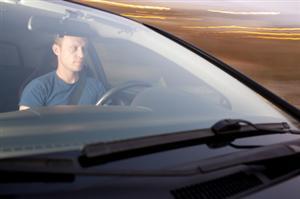| Complexity level: | 8 |
| Project cost ($): | 80 |
| Time required: | 1 hour to prepare, 1 day for the science project experiment |
| Material availability: | Easily found |
| Safety concerns: | Avoid long exposure to strong sunlight. Wear protective clothing and eyewear. |
Hypothesis
Car windscreens with tinted glass are more effective in blocking out UV light.
Overview
Ultraviolet radiation
Ultraviolet (UV) radiation is part of the electromagnetic spectrum of light that travels to earth from the sun. In the spectrum, it falls between visible light and X-rays. UV light falls at the blue end of the light spectrum and cannot be seen by the naked eye. It contains a higher energy level and shorter wavelength compared to visible light. Based on its effect on living organisms, UV light is classified in three categories - namely UVA, UVB and UVC.
- UVA with a wavelength of between 315nm and 400nm is capable of penetrating our skin and accelerate skin aging. Our skin is able to tolerate normal levels of UVA radiation.
- UVB with a wavelength of between 280nm and 315nm does not penetrate very deep into our skin, but carries a higher amount energy. Only a small amount of UVB is able to penetrate the ozone layer and reach the earth surface. UVB causes a burning sensation when in contact directly with the skin.
- UVC with a wavelength of between 240nm and 280nm has even higher amounts of energy but it is immediately lost upon contact with a surface. UVC is the most harmful type of UV light to all living organisms including humans. It is used to kill microbes in germicidal applications. Almost all of the UVC from the sun, is prevented from reaching the earth's surface by our atmosphere.
UV levels are normally at their highest around 10:00 am to 2:00 pm every day. One of the most convenient ways of measuring UV levels is the UV index. Each unit of the UV index represents about 25mW per square meter of UV radiation. The UV index is a very useful way of providing information to the public regarding daily UV exposure levels
The UV index range is described as follows:
Less than 3: Moderate levels
Between 3 and 6: High levels - enough to cause sunburn even at temperatures below 27 degrees Celsius
Between 7 and 9: Very high levels - enough to cause sunburn on cloudy days
More than 9: Extreme levels - that cause sunburn to an unprotected skin within 12 minutes.
Scientific Terms
Materials
The materials required for the science fair project:
- 1 glass window
- 1 car windscreen without any tinting
- 1 tinted car windscreen
- 1 UV meter
- 1 wooden box with top open (approximately 500mm long x 500mm wide)
Procedure
1. For this science fair project, the independent variable is the type of glass tested – window glass, car windscreen without tinting, tinted windscreen. The dependent variable is the level of UV radiation measured. This is determined by using the UV meter. The constants (control variables) are the time the measurements are taken, the level of sunlight on the testing day and the geological location where the testing is done.
2. The wooden box is placed in a location where there is direct sunlight away from any shadows, with the open side up. The UV meter is placed inside the box and the UV index reading is taken. The reading is recorded in the table given below.
3. The window glass is next placed over the wooden box covering the top with the UV meter still inside the box. The new reading on the UV meter is read and recorded in the table below.
4. The window glass is removed from the box and the reading on the UV meter is checked once more. The car windscreen without any tinting is placed over the box and the reading on the UV meter is read and recorded in the table below.
5. Finally, the windscreen is replaced with the tinted windscreen and the new UV reading is recorded in the table below.
Results
It was observed that the windscreen without tinting is able to block off more UV radiation than the glass window. The tinted windscreen was able to block out almost all the UV radiation.
|
Glass type |
UV index level |
|
|
Outside box |
Inside Box |
|
|
Window glass |
4 |
3 |
|
Windscreen without tint |
4 |
1 |
|
Tinted windscreen |
4 |
0 |
Conclusion
Our hypothesis that car windscreens with tinted glass are the most effective in blocking UV light, has been proven to be true.
UV light is used to cure materials such as ink, dyes and similar polymers. However, care must be taken to protect the skin from UV radiation. UV radiation can cause sunburn and increase the risk of cancer. Taking precaution to protect our skin from UV radiation for the first 18 years of our life can help to reduce the risk of contracting skin cancer by 50%.
Also consider
What would happen if the science fair project were to be repeated using glass of different thickness?
The science fair project can be also modified by using a UV lamp and various types of sunglasses to measure how well they block out the UV light.
References
About forecasts for UV protection - http://www.bom.gov.au/info/about_uv.shtml
Why measure UV? - http://www.solatell.com/Why%20measure%20UV.htm
How to measure the UV index using the UV meter? - http://www.bom.gov.au/info/weatherkit/section2/pdf/uv.pdf

